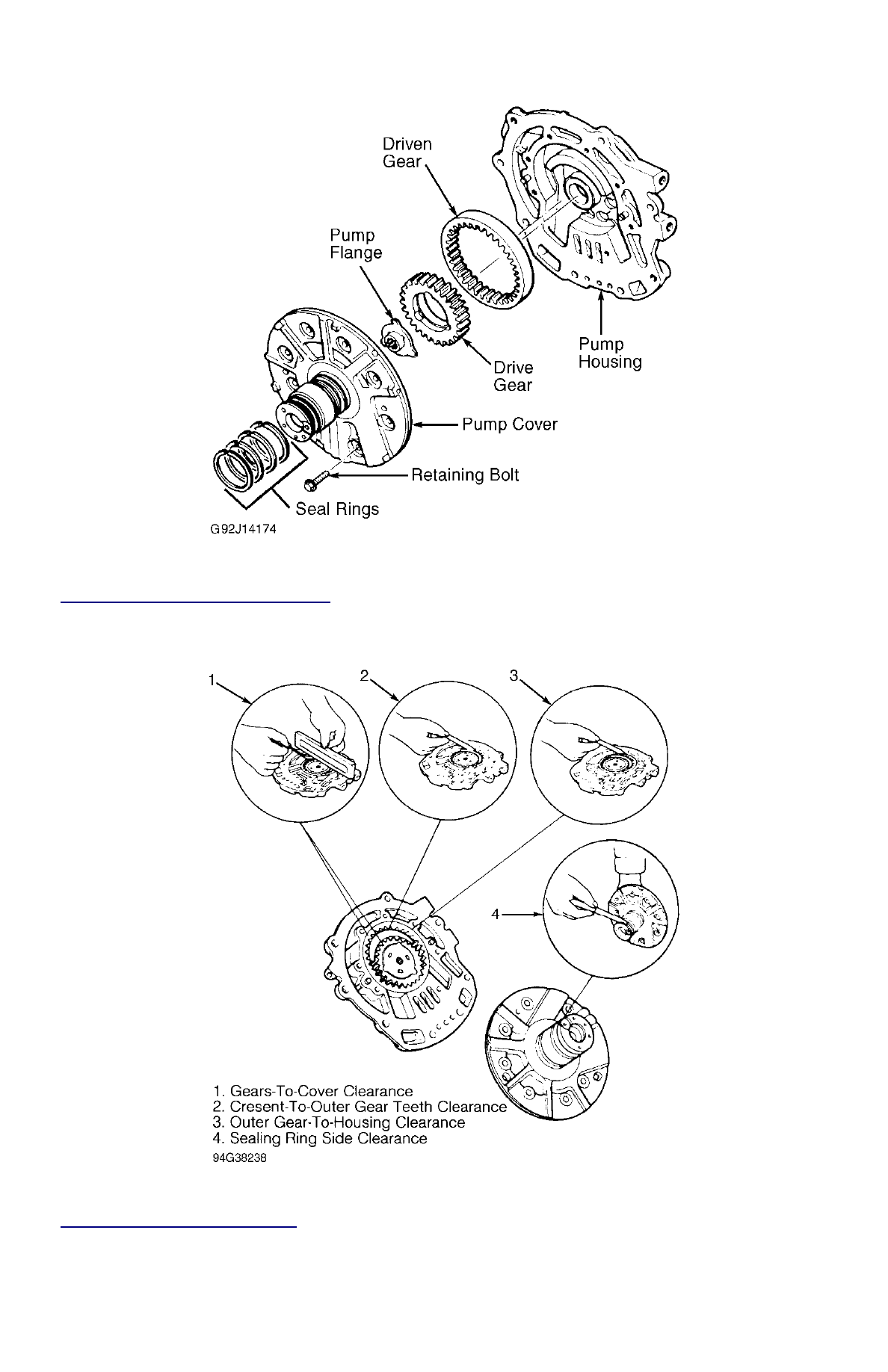Ford Festiva. Instruction - part 107

Fig. 19: Exploded View Of Oil Pump Assembly
Courtesy of FORD MOTOR CO.
Fig. 20: Measuring Oil Pump Clearances
Courtesy of FORD MOTOR CO.
ONE-WAY CLUTCH
Disassembly, Inspection & Reassembly
|
|
|

Fig. 19: Exploded View Of Oil Pump Assembly
Courtesy of FORD MOTOR CO.
Fig. 20: Measuring Oil Pump Clearances
Courtesy of FORD MOTOR CO. ONE-WAY CLUTCH Disassembly, Inspection & Reassembly |